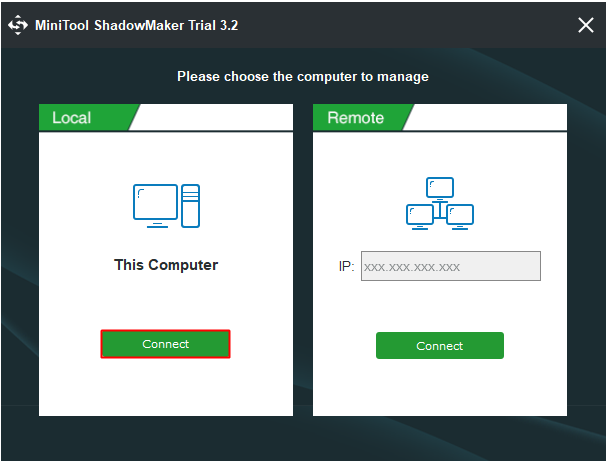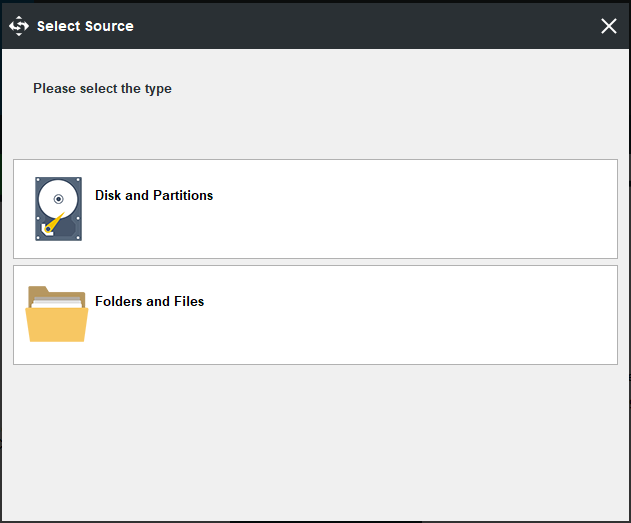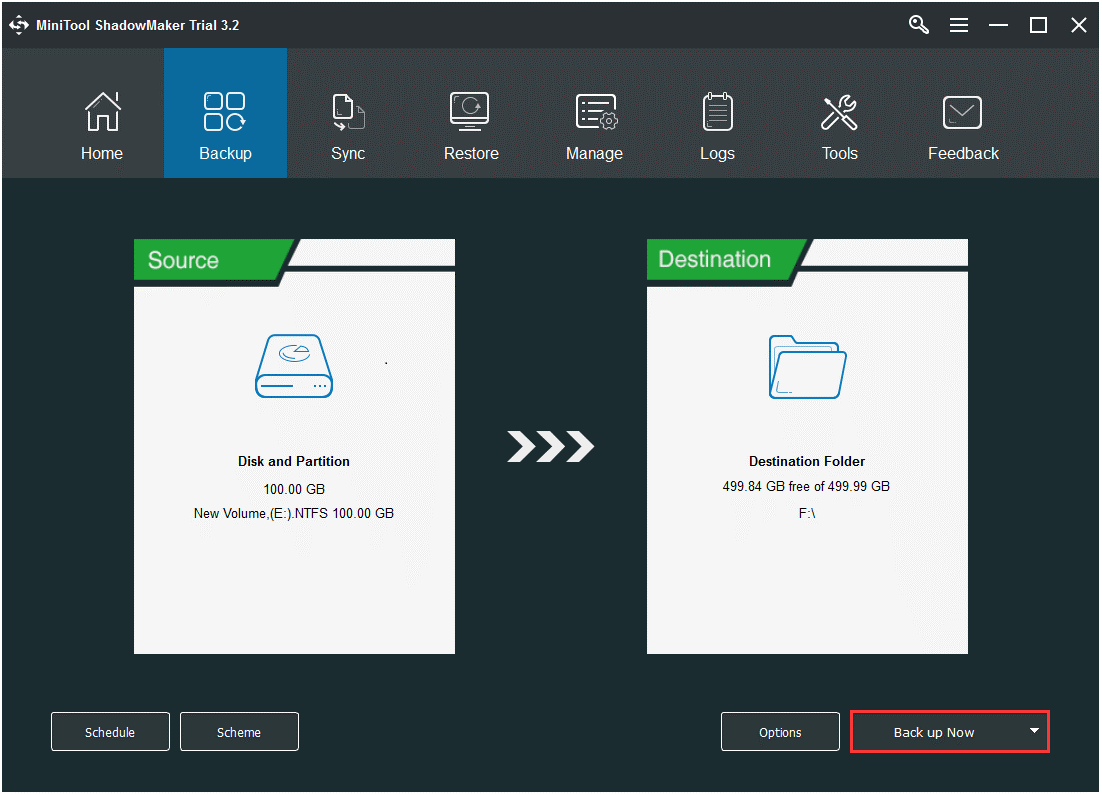What is RAID 1 and what is RAID 5? What is the difference between them? If you are looking for the answers, then this post is what you need. MiniTool introduces RAID 1 vs RAID 5 in detail. What’s more, you can know how to protect your data.
RAID is short for Redundant Array of Independent Disks, which is data storage virtualization technology. It combines plenty of physical disk drive components into one or more logical units to achieve data redundancy and/or improve performance.
You can find multiple RAID levels such as RAID 1, RAID 5, RAID 6, and RAID 10. Different RAID levels require different numbers of hard drives and provide various redundancy, fault tolerance, and performance.
Related post: RAID 6 vs RAID 10: Which One Performs Better and Faces Lower Risk
If you want to choose between RAID 1 and RAID 5, keep on your reading to know the difference between them, then you will know which one is more suitable for you.
Introduction to RAID 1
Firstly, you should know some basic information about RAID 1. RAID 1 is composed of data mirroring without parity, striping, or spanning. Data is written to two or more drives identically, creating a “mirrored set” of drives. Therefore, any drive in the set can satisfy any read request.
If the request is broadcast to each drive in the set, the drive that first accesses the data can handle the request (depending on its seek time and rotational latency), improving performance.
If the controller or software is optimized for, it the continuous read throughput will be close to the sum of the throughput of each drive in the set, just like RAID 0. The actual read throughput achieved by most RAID 1 is slower than the fastest drive. Write throughput is usually slower because the slowest drive limits write performance. As long as at least one drive is running, the array will continue to run.
Pros
- RAID 1 has excellent read speed and writes speed, especially when the RAID controller uses multiplexing to read data from many disks at the same time.
- If the drive fails, there is no need to rebuild the data, just copy it to the replacement drive.
- RAID 1 is a very simple technology because of no parity.
Cons
- The effective storage capacity is only half of the total capacity of the drive because all data will be written twice.
- It is not automatic to access data from the failover disk. If the first disk fails, the system must be shut down to repair the secondary disk.
Introduction to RAID 5
RAID 5 is composed of block-level striping with distributed parity and it requires at least three disks but up to 16 disks. Unlike RAID 4, parity information is distributed among the drives, requiring all drives except one to be able to operate. When a single drive fails, subsequent reads can be calculated from the distributed parity so that no data will be lost.
As with all single parity concepts, large RAID 5 implementations are also susceptible to system failures due to trends regarding array rebuild times and the possibility of drive failures during rebuilds. Rebuilding the array needs reading all data from all disks, which may cause a second drive failure and the loss of the entire array.
Pros
- The read operation is fast and can provide services to multiple users at the same time.
- It provides a high level of data redundancy.
- The RAID controller uses parity to rebuild data, so there will be no data duplication, and disk space can be effectively used.
- There is no need to shut down the system when the disk fails because the parity information is used to rebuild this data.
- If a drive fails, even if the failed drive is replaced and the storage controller rebuilds the data on the new drive, you can still access all the data.
Cons
- The write operation is a bit slow.
- At least three disks are required.
- Drive failure will affect throughput.
- This is a complicated technique. If one of the disks in an array using 4TB disks fails and is replaced, it may take a day or more to recover the data (rebuild time). If another disk is damaged during this period, the data will be lost forever.
Related post: RAID 5 vs RAID 10: What’s the Difference and Which One Is Better?
RAID 1 VS RAID 5: Difference Between Them
After you have got some basic information about RAID 1 and RAID 5, this part we listed some information about RAID 1 vs RAID 5, so you can know the difference between RAID 1 and RAID 5.
RAID 1 VS RAID 5: Storage Capacity
The storage capacity needs to be compared when talking about RAID 1 vs RAID 5.
RAID 1: The disks must be set up in pairs of the same size, so an x2 2 TB drive will provide you with 2 TB of space. If more is needed, other pairs must be added.
RAID 5: At least 3 drives are needed, and the total capacity is the sum of all drives, minus the size of one drive. That is, x3 2 TB drives = 6 TB – 2 TB = 4TB available.
RAID 1 VS RAID 5: Configuration
Speaking of RAID 1 vs RAID 5, the configuration also needs to be compared.
RAID 1 configuration is very simple – all data is stored identically on several physical disks. There are often only 2 disks in RAID 1, but more disks can be added for additional redundancy.
RAID 5 provides fault tolerance through redundancy. RAID 5 optimizes storage efficiency by using parity and checksum, rather than store a mirror image of all data (such as RAID 0). RAID 5 adopts distributed parity, so parity blocks are stored on each physical disk in a round-robin fashion. You need at least two disks for striping, and another disk to store parity bits; therefore, RAID 5 requires at least 3 physical disks.
RAID 1 VS RAID 5: Read and Write Operations
RAID 1 vs RAID 5, what’s the difference in read and write operations?
RAID 1
Compared to using only one physical disk, read operations on RAID 1 are faster. This is because data can be read in parallel. The read request will be sent to each physical drive, and the fastest performing drive can return the data to the controller first. The software optimization of the controller can facilitate almost parallel reads, so the total throughput of the RAID is close to the sum of the throughput of all physical drives in the RAID.
The write operation on RAID 1 is slower in that the write operation is not completed until the data is written to all disks. Therefore, the slowest disk in the array becomes the bottleneck.
RAID 5
Since RAID 5 adopts striping, read operations occur in parallel and are very quick. The writing speed is also very quickly, but due to the overhead of calculating and writing the parity block, the writing performance will be slightly reduced.
RAID 1 VS RIAD 5: Fault Tolerance
The last aspect that needs to talk about RAID 1 vs RAID 5 is fault tolerance.
RAID 1 possesses brilliant fault tolerance. On condition that one of the physical drives in the array is functioning normally, RAID can function. Recovery from the failure is quick because creating a replacement drive is just a matter of copying all the data in a functional drive.
RAID 5 adopts striping to offer the performance advantages of RAID 1, while also providing fault tolerance. If a physical disk in RAID 5 fails, the system will maintain the read function. Due to the overhead of calculating parity, reads and writes during error recovery will be slow.
Related post: The Best RAID Partition Manager Manages RAID Partition Smoothly
RAID 1 vs RAID 5 performance: which is better? After reading this post, you should know that, and you can also know which one is more suitable for you.
Using RAID hard disk drive is to combine more logical disks into one unit to provide more storage space, but if one of the disks fails, it may cause data loss. For example, if one of the RAID 5 hard disks fails, data recovery will be difficult.
And in some other situations, you could suffer data loss, thus, it is recommended to back up your files or hard drive.
How to Protect Your Important Data?
Then how to back up your hard drive? MiniTool ShadowMaker is the top-recommended, which is a professional backup tool. It aims to back up your Windows system, disks, partitions, files, and folders. What’s more, you can also use it to sync files and clone a hard drive to SSD.
Now follow the instructions below to back up your hard drive to protect your important data.
Step 1: Download and launch MiniTool ShadowMaker. Click Keep Trial.
MiniTool ShadowMaker TrialClick to Download100%Clean & Safe
Step 2: Click Connect in This Computer to enter its main interface.

Step 3: Go to the Backup page. Then click Source to choose the backup source.
Step 4: Click Disk and Partitions. Choose the hard drive that you want to back up, and then click OK.

Step 5: Click Destination to choose the hard drive to save your backup image. It is recommended to choose an external hard drive and never click the source disk as the target disk. Click OK.
Step 6: After confirming the backup source and the destination, click Back up Now to start the task.

After the process is finished, then you have backed up your hard drive successfully. So you can use the backup image to restore the hard drive if it fails.
Related post: Best Method of Data Recovery from RAID | Easy Step By Step Guide
Final Words
To sum up, this post has introduced what the RAID 1 and RAID 5 are. More importantly, you can know the information about RAID 5 vs RAID 1. In addition, to protect your data, using MiniTool ShadowMaker to back up your hard drive is necessary. If you have any confusion about this post, leave a comment below or send an email to [email protected].
RAID 1 VS RAID 5 FAQ
RAID 0 can improve the sequential read and write speed. However, this also doubles the risk of failure, because any drive failure will cause you to lose all your data. RAID 1 has the same speed advantage as RAID 0 in reading, but it has no speed advantage in writing.
You will lose half of the space, but if one of the drives fails, you still have all the data and you can use the computer as usual. You may be interested in this post – RAID 0 VS RAID 1: What’s the Difference and Which Is Better?